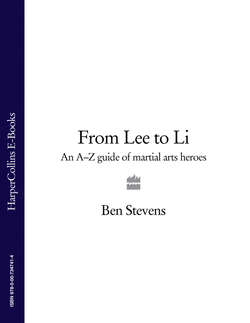Читать книгу From Lee to Li: An A–Z guide of martial arts heroes - Ben Stevens - Страница 6
ОглавлениеA
ADAMS, NEIL
Born in 1958, and having started judō aged seven, Neil Adams MBE has the distinction of being Britain’s first male World Judō Champion (receiving a gold medal in 1981), as well as receiving silver medals at the 1980 and 1984 Olympic Games. His autobiography, A Life in Judo, demonstrates his fiery will to win, and hatred of losing.
Initially known for his powerful throws—particularly tai-otoshi or ‘body drop’—his defeat to a French opponent, when aged twenty, made him focus intensively on newaza, or grappling. Soon, his newaza techniques were recognised as being some of the finest in professional judō—and it was his trademark arm locks in particular that were feared by those who had to face him. (According to journalist and judō practitioner, Mark Law, in his definitive book The Pyjama Game: A Journey into Judo, any opponent of Adam’s who found himself grappling with him, would ‘…soon hear their coaches at the matside screaming warnings at them to get on their feet’.) Adams kept detailed logs concerning both his own and his opponents’ performances, and was pushed to the very limits of physical endurance by such trainers as Brian Jacks.
For a time the darling of the British media (due partly to his on-off relationship with Olympic swimmer Sharron Davies), Neil Adams now runs a Corporate Health Programme with his Canadian-born wife, Niki, who is herself a judō Olympian. (The pair met while they were both commentating at the 2000 Sydney Olympic Games.) At the time of writing, Adams is a seventh dan judoka (judō practitioner).
AKIYAMA, YOSHITOKI SHIROBEI
During the seventeenth century (although some sources put the date at up to 200 years earlier), Akiyama, a Japanese physician born in Nagasaki, travelled to China in order to improve his medical knowledge. Whilst in China, however, he also studied an ancient martial art known variously as either Hakuda or Baida. Hakuda or Baida showed a practitioner the most lethal parts of the human body to strike—but also taught how it was possible to resuscitate someone from the brink of death.
Returning to Japan armed with this new knowledge, Akiyama opened his own martial arts’ school; but his methods were generally considered to be crude and limited, and those students who joined soon left. Greatly disillusioned, Akiyama retreated to a remote shrine for 100 days to think and meditate.
Towards the end of this period of isolation, Akiyama was profoundly affected by the sight of a pine tree that—rigid and unyielding as it was—was severely damagedduring a snow storm. The snow accumulated upon the branches until the sheer weight of it caused the limbs to snap. However, a nearby willow tree yielded and bent, thereby surviving the storm completely unscathed.
This caused Akiyama to evolve a large number of what he called ‘natural movements’, and again start another martial arts’ school—this time with far greater success. He named his style yoshin-ryu, or ‘willow heart school’.
